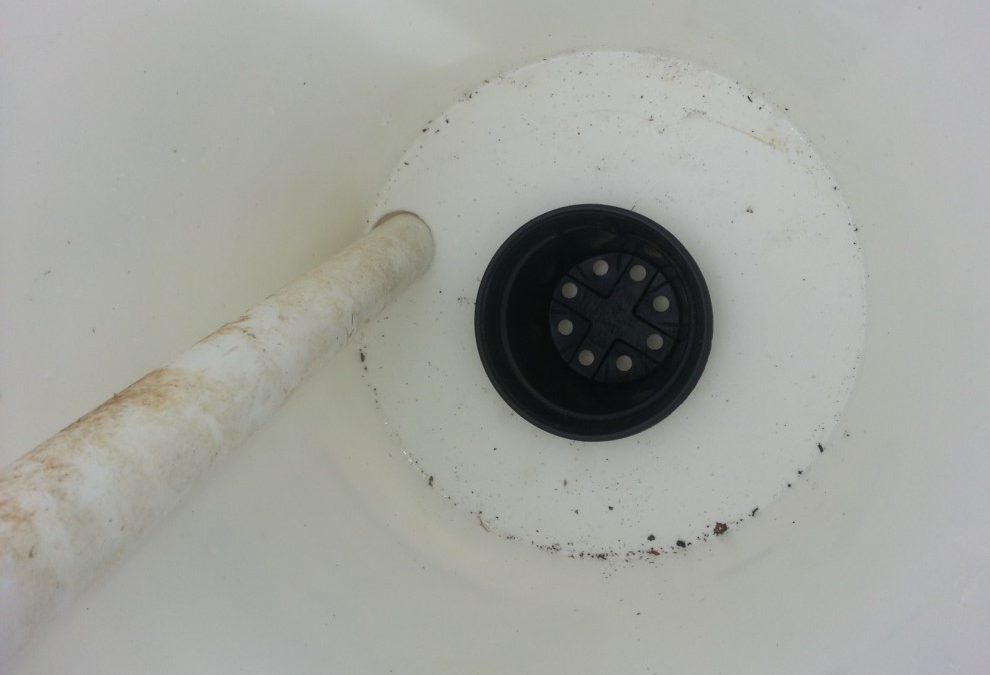
by Molly Jameson | May 20, 2019
Spring is in the air, and that means temperatures are warming up and tank-tops, shorts, and flip-flops will soon be your preferred attire. Once those highs are steadily in the 80s and 90s, any outdoor activity will become coupled with a bottle of water and the occasional ice-cold glass of lemonade.
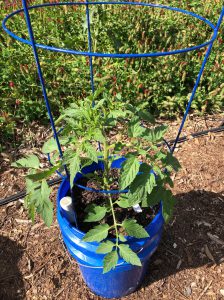
Self-watering containers allow you to continue gardening even if you plan on going on vacation this summer. Photo by Molly Jameson.
If you’re a gardener, you will notice the hot sun doing its best to dehydrate not only you, but your spring vegetable and flower beds too. And although April showers bring May flowers (and Mayflowers bring pilgrims) in many parts of the country, spring is historically one of the driest periods for the Florida Panhandle.
While spring in the Florida Panhandle can be quite dry, it is the relentless heat of summer that really drives up transpiration and evaporation rates. And herein lies the dilemma: the kids are soon to be on summer break, family vacations are on the horizon, and all your favorite summer veggies are on the brink of delivering their bounties.
If you do not have a reliable irrigation system and timer or the fortune of a very generous green-thumbed neighbor, you risk your hard work in the garden succumbing to the heat while you are away. If you find yourself sacrificing a summer garden in place of a vacation, don’t despair. There is a low-cost, homemade solution that can step in while you are away: a self-watering container garden.
Self-watering containers use the process of capillary action, where water molecules are pulled upward from a water reservoir into soil above and then into and through plant roots. The forces of cohesion, in which water molecules stay close together, and adhesion, in which water molecules “stick” to other substances, create this important phenomenon.

A wicking basket uses capillary action to pull water molecules up from the water reservoir and into the soil. Photo by Trevor Hylton.
While store-bought versions can be costly, you can make a self-watering container for less than $10 with just a few materials and tools. There are multiple designs for creating a self-watering container at home. Typically, designs include two five-gallon food-grade plastic buckets to hold the soil and plant; a knife or hole saw to access the water reservoir; a wicking basket or strips of cotton from an old towel, pants, or shirt to generate the capillary movement of water; a drill and drill bit for drainage; and a plastic pipe for easy filling of the water reservoir.
To make your own, view these Extension-produced self-watering container garden resources and follow the step-by-step instructions that work best for you:
by Beth Bolles | Jun 7, 2018
There is one tough annual plant that thrives in the summer garden and provides bright color in our sun and heat. Portulaca or moss rose (Portulaca grandiflora) is strong performer, even growing well when reseeding in sidewalk cracks and stone walkways. Of course it will be most attractive when used in containers or well drained landscape beds in bright sunshine.
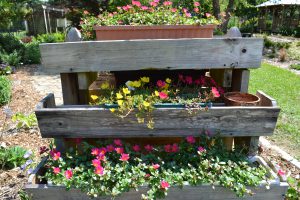
Containers of portulaca brighten an entrance to the herb garden at Escambia County Extension Demonstration Gardens. Photo by Beth Bolles, UF IFAS Extension Escambia County
The thicker, flattened leaves of portulaca make is adaptable to drier conditions. The plants are only about 6 inches tall but branches will spread out a foot or so from the center. The attractive flowers extend just above attractive green foliage in colors of yellow, pinks, and oranges. Portulaca is extremely versatile, making it a good filler in a container or at the edges of flower beds along hardscape areas.
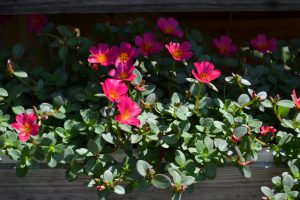
Bright flowers of portulaca reach for the sun. Photo by Beth Bolles, UF IFAS Extension Escambia County
Portulaca will not perform the best when soils remain too moist or days stay overcast for extended periods. Flowering will also be reduced if water is totally lacking. Maintain a balance by providing a quality soil that drains well.
Although many gardeners prefer perennials to annuals, portulaca can provide a big impact in the summer garden for a small investment.

by Daniel J. Leonard | Jul 5, 2017
Let’s be honest with each other and have a moment of transparency, one gardener to another. Even though we are plant people, most of us get a lot less enthusiastic once the mercury explodes over 90 degrees each June. All the things that were fun in the spring (watering our favorite fickle plants, deadheading spent flowers, staking, tying, fertilizing, the list goes on) have ceased to be fun. At this point, like a baby bird pushed out of the nest, the plants in our yards have to either fly or die. Fortunately, if we select the correct, tough-as-nails plants to start with, our gardens do not have to decline when we retreat into the air conditioning! The following are four of my favorite ironclad native perennials that will reward you with color, texture, and overall excellent performance all summer and ask very little in return!

Black-Eyed Susan ‘Goldsturm’ (Rudbeckia fulgida var. sullivanti ‘Goldsturm’)
There is no more reliable plant in the garden than plain old Black-Eyed Susan. This beauty delivers yellow-gold flowers with its namesake black, cone-like centers perpetually from May to frost in the Panhandle and returns like clockwork each spring to do it all over again! While not exactly native, the 1937 selection ‘Goldsturm’ is still easily the most popular Rudbeckia eighty years later, with good reason. ‘Goldsturm’ improves upon the native Rudbeckias in almost every way. It is a more compact plant, forming a spreading mass of flowers about two feet in height, sports larger, showier flowers than the species, and flaunts lustrous dark green foliage. If low-maintenance, raw flower power is what you are after, Black-Eyed Susan ‘Goldsturm’ is right for you!
If the landscape calls for a plant with flowers hotter than the July sun, Scarlet Sage is hard to beat! This tough, prolific perennial boasts fire engine red, tubular-shaped flowers throughout the warm season in Northwest Florida and is one of the very best attractors of a host of pollinators including butterflies and hummingbirds. Growing this native couldn’t be easier, it is not picky about soil type and texture so long as it doesn’t stay waterlogged, it requires little to no supplemental fertilizer or water, and will thrive in full sun or partial shade. A word of warning before planting Scarlet Sage however, be aware that the plant will self-sow prolifically, potentially appearing in unwanted places and becoming a nuisance. Though with a plant this undemanding and pretty, I do not mind one bit if it decides to ramble through the landscape.
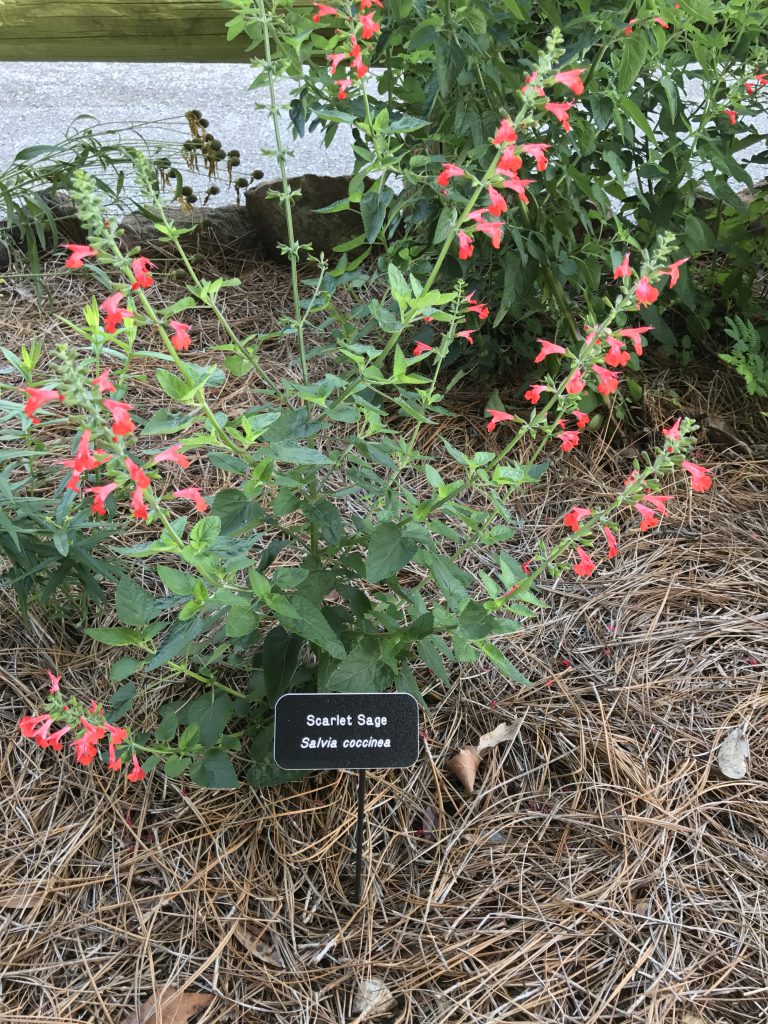
Scarlet Sage (Salvia coccinea)
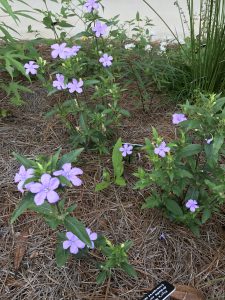
Carolina Petunia (Ruellia caroliniensis) (note: Not to be confused with Mexican Petunia (Ruellia simplex), which, despite its popularity, is an invasive weed and should not be planted)
For those of you that lament hot weather because it means the decline of the showy annual petunias sold by the thousands at big box stores across the South, there is a summer solution for you! Carolina Petunia is a compact (growing to 24” in height), hardy plant whose many outstanding ornamental qualities, including soft purple flowers produced in profusion, make it a great addition to virtually any garden border. It is not picky regarding soil and while flowering is best in full sun, it grows just fine in the dappled shade of pines or other taller perennials and shrubs. Like Scarlet Sage, Carolina Petunia will seed around in the landscape but is easily managed and never wears out its welcome.
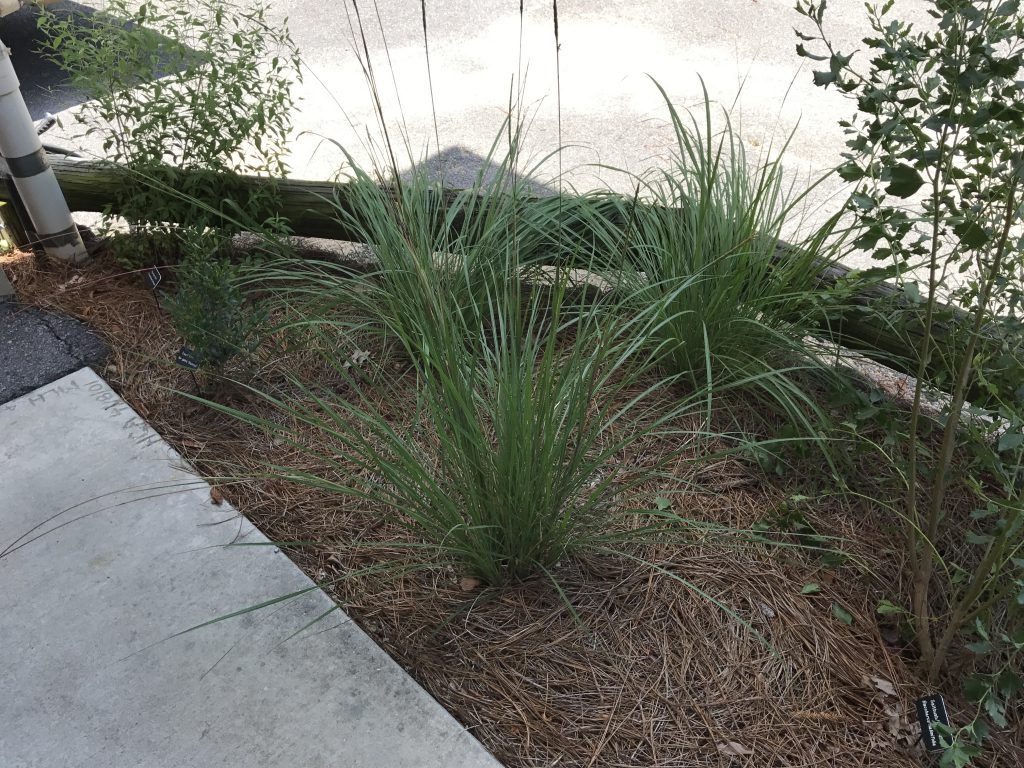
Dwarf Fakahatchee Grass (Tripsacum floridanum)
Ornamental grasses have gained in popularity over the last few years and with good reason! Ornamental grasses tend to be drought tolerant, laugh at the summer sun, and require little maintenance. However, many popular ornamental grass species like Miscanthus, Muhlenbergia, Pennisetum, and others tend to grow too large for most gardens and end up being replaced a few years later. Dwarf Fakahatchee fits this niche perfectly, with its emerald green leaf blades only growing 2-3’ in height and width. It is also more adaptable than most ornamental grass species as it will thrive in sun or partial shade and is tolerant of both wet and dry sites! While it lacks the colorful flower panicles of Muhly Grass or Miscanthus, Dwarf Fakahatchee does possess interesting brown flower stalks and seed heads as well!
All of these awesome low-maintenance, native perennial selections can be purchased at member nurseries of FANN (Florida Association of Native Nurseries) or local independent garden centers. As always, if you have any questions about this or other horticultural topics, contact your local UF/IFAS County Extension Office.










